Commodities
APEX has worked on a wide spectrum of commodity types such as precious metals, base metals, specialty minerals, diamond, industrial minerals and oil sands.
-
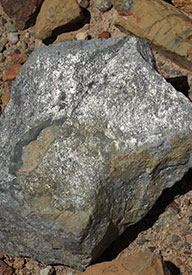
Ag
Silver is a precious metal commonly found as argentite, argent tennantite, tetrahedrite, chlorargyrite, among others. Silver is regularly associated with gold, copper and lead-zinc ore and can be mined both as a main product or as a byproduct. Silver is common in volcanogenic massive sulfide VMS deposits, sedimentary exhalative (SEDEX), lithogene and magmatic-hydrothermal deposits, including epithermal vein hosted deposits. Silver has been used historically as a monetary metal as well as in jewelry while its properties of malleability, conductivity among others, allow for several applications in a variety of industries, including medicine, water purification, window and mirror manufacturing, dental alloys, electronics, solar/photovoltaic panels, and batteries. The growing use in the energy and automotive sectors has increased the demand for silver over the past decade.
View Commodity -

Aggregate
Industrial minerals are non-fuel and non-metal materials that are used in industry based on their physical properties (e.g., fibrosity, insulation capacity, density, hardness) and/or chemical properties. Industrial resources include materials such as limestone, dolostone, graphite, clay, shale, diatomite, sand, silica, gravel, bentonite, kaolin, barite, gypsum, salts, talc, and others. They provide resources for the construction industry: building stone, clays, and shales for brick manufacture; the chemical industry: salt for de-icing and various chemical products; and the manufacturing industry: limestone and dolostone for iron and steel; electronics, paper production, ceramics, plastics, glass. They are used in many household products and industrial processes. Aggregates are a category of industrial minerals widely used in construction; they consist of coarse- to medium-grained particulate material including sand, gravel, and crushed stone. Aggregates are a component of composite materials such as concrete and asphalt to which they add strength. Aggregates are also widely used in drainage applications such as French drains, septic drain fields, retaining wall drains, and roadside edge drains, due to their relatively high hydraulic conductivity compared to most soils. Aggregates are also used as base material under foundations, roads, and railroads. Aggregates are the most mined materials in the world. Aggregates and other industrial minerals are used in our everyday life and ensuring their continued supply is essential for the construction, chemical and manufacturing sectors.
View Commodity -
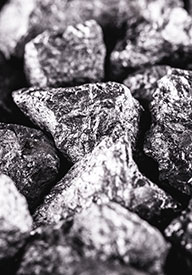
Al
Aluminum is a lightweight, flexible, strong, and corrosion-resistant metal. Aluminum is also an excellent conductor of heat and electricity and is one of the most widely used and recycled metals in the world. Aluminum and its alloys are mostly used in the construction and the automotive and transportation industries because their unique lightness and durability. Aluminum is also widely used in the packaging, electrical, electronics, machinery, and equipment industries. The principal aluminum ore is bauxite, a mixture of hydrated aluminum oxides and silica and iron oxides. The world aluminum demand is constantly growing due to an increased demand in the construction and transportation industries. Aluminum is on Canada’s 2021 critical minerals list, meaning that it is essential to Canada’s economic security.
View Commodity -
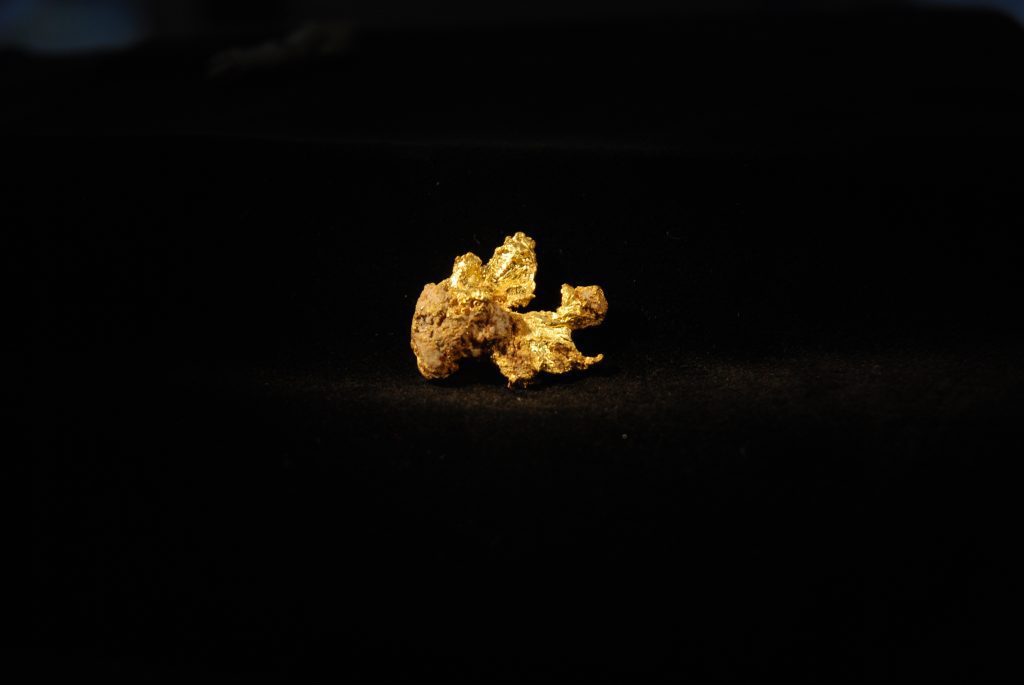
Au
Gold occurs in a variety of rock types and deposit styles, with many methods of extraction. The precious metal gold is very important to the world economy. In addition to its monetary value and use in jewelry, it has several industrial uses. It is resistant to corrosion, highly conductive, ductile and malleable, making ideal for use in electronic devices. Gold commonly occurs with other economic metals including silver, copper and base metals. With the steadily increasing use of electric vehicles and electrification in general, gold, and other precious metals used in electronics and batteries will continue to see their demand for industrial uses rise.
View Commodity -
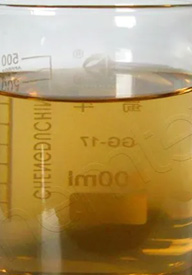
B
Boron is a dark, brittle, and lustrous metalloid that conducts electricity like a metal at high temperatures and is almost an insulator at low temperatures. Boron is primarily used in chemical compounds. It is used as an additive in fiberglass for insulation and structural materials, in ceramics and polymers in high-strength, lightweight and heat-resistant materials, as a dopant in semiconductors to modify electrical conductivity, and in the nuclear industry due to its neutron absorption ability. Boron is also an essential plant nutrient and is used in some antibiotics, in abrasives, cleaning products, and insecticides. Boron is found naturally combined in compounds such as borax (a salt) and boric acid or its mineral form, sassolite. These compounds and other boron minerals can be found in volcanic fumaroles and hot springs, deposited from steam, as well as in lagoons and sedimentary evaporite deposits. Boron is also found as a component in oilfield brines along with lithium and other salts. The continued rise in boron demand is expected to fuel growth in world production over the next few years.
View Commodity -
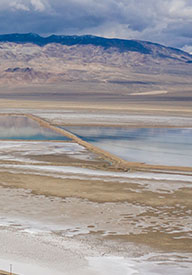
Br
Bromine is a halogen element that is liquid at room temperature. It is a strong oxidizing agent. Bromine is largely used in the production of flame retardants and brine drilling fluids. Bromine is also used in flow batteries, pharmaceuticals, water treatment, dyes, and in a variety of industrial applications. The main sources of bromine and its compounds are natural salt deposits (in seawater and evaporitic lakes) and brines associated with petroleum deposits. The global bromine demand is increasing, due to increased demand for electric vehicles which require hydrogen bromide flow batteries, and its other major industry applications.
View Commodity -
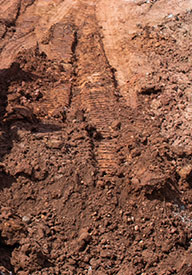
Clay
Clay is a type of fine-grained natural soil material containing clay minerals. Clay minerals are hydrous aluminum phyllosilicates that can contain variable amounts of iron, magnesium, alkali metals, alkaline earths, and other cations. The main groups of clay minerals include kaolinite, montmorillonite-smectite, and illite. Talc, vermiculite, chlorite, and pyrophyllite are sometimes also classified as clay minerals. Clay is particularly defined by its plasticity when wet and its ability to harden when dried or fired. Clay minerals have a wide variety of applications and are used in numerous industries including in ceramics, civil and process engineering, petroleum discovery, recovery and refining, construction, agriculture, cosmetics and art. The potential uses and applications are closely related to their structure and composition. Clay minerals must be assessed for their chemical, physical and toxicological specifications, such as: purity, particle size, texture, stability, chemical inertia, water content, atoxicity, safety and microbiological purity. Assessing these characteristics is integral to identifying the potential of any clay deposit. Recently environmental awareness has spurred an increased interest in the use of clay minerals in numerous industries as they cause no harm to the environment after disposal. The ubiquity of clay materials and their relatively low cost ensures that they will continue to be used in the future with research and development continually identifying new applications for use.
View Commodity -

Co
Cobalt is usually produced as a by-product of nickel and copper extraction – however, there are rare hydrothermal deposits that are primarily cobalt based. It is commonly used in high performance alloys and lithium-ion batteries. The growing demands from the energy sector have significantly increased the demand and price for cobalt over the past decade.
View Commodity -
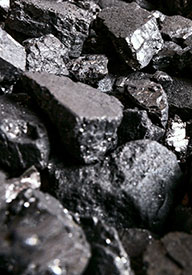
Coal
Coal is a fragile sedimentary rock formed from the accumulation of plant material in a low oxygen environment, such as a swamp, and buried in sediment. The plant material is subjected to heat and pressure from burial and transforms into coal. A variety of factors contribute to the quality of coal produced, such as the type and amount of plant material, temperature and pressure, and length of time buried. There are four main types (ranks) of coal, from lowest carbon content to highest: lignite, sub-bituminous, bituminous, and anthracite. Bituminous coal is further divided into thermal coal and metallurgical (coking) coal. Thermal coal is used for energy production and metallurgical coal is used for steel manufacturing. Geopolitical concerns have driven recent increases in demand for thermal coal for power generation and demand for metallurgical coal is expected to remain strong.
View Commodity -

-
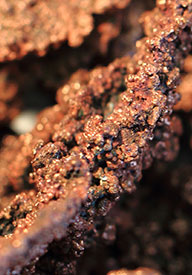
Cu
Copper is a ductile metal with high thermal and electrical conductivity and is commonly used in electronics, building materials and renewable energy systems. Economic copper deposits are primarily porphyry, volcanogenic massive sulphide (VMS) or iron oxide-copper-gold (IOCG) in style. The current rate of exploration and development of major new copper projects will not keep up with the projected demand for the commodity; potentially pushing energy transition goals further into the future.
View Commodity -
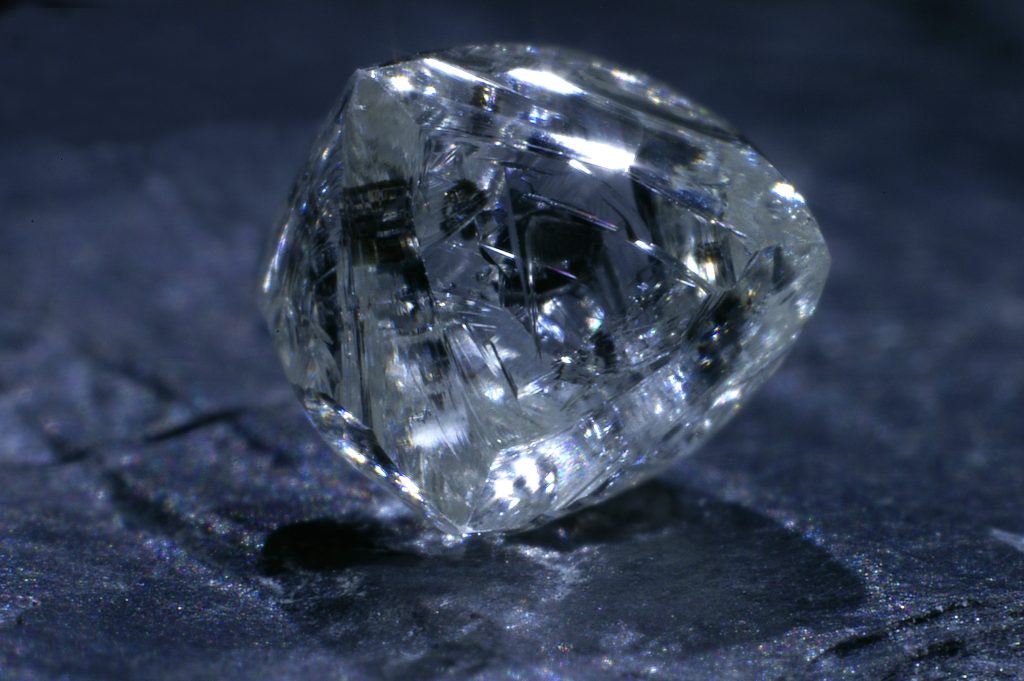
Diamond
Diamond is composed largely or pure carbon. Diamonds form in the earth’s mantle under high pressure and temperature and are brought to the surface by volcanoes known as kimberlites or lamproites. Diamond is best known for it’s use in jewelry. However, diamond’s unique properties also make it ideal for use in other industrial applications. Diamond is the hardest known natural substance, is chemically resistant and has the highest thermal conductivity of any natural material. Due to these factors diamonds are extremely useful cutting, polishing and drilling tools. Diamond’s high index of refraction, high dispersion, and adamantine luster enable it to be used in specialty lenses where durability and performance are required. New uses for diamond are cropping up in the cosmetics and medical industries.
View Commodity -
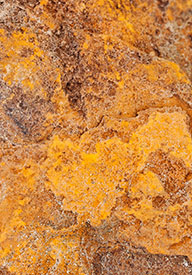
Fe
Iron is the most widely used of all metals accounting for over 90% of worldwide metal production. It is required for the production of steel which is essential to maintain a strong industrial base. Metallic iron is virtually unknown on the surface of earth except as iron-nickel alloys from meteorites. Iron is primarily sourced from hematite and magnetite hosted in Banded Iron Formations (BIF). Global iron ore supply will struggle to keep pace with demand as there are few green fields projects in the pipeline. Decarbonization goals in several countries will see demand for high quality iron ore increase putting pressure on global supply.
View Commodity -

-
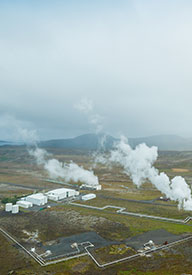
Geothermal
Geothermal energy is heat that is generated from within the Earth’s core and due to the decay of radioactive isotopes. To access geothermal energy, drilling a few kilometres (typically 1-5 km) into the subsurface of the Earth’s crust is necessary. Conventional geothermal energy resources are most commonly accessed near volcanic regions and deep sedimentary basins that host hydrothermal (hot water and/or steam) reservoirs. Research and development into unconventional geothermal resources are being commercialized as well, such as utilizing wastewater from oil and gas production, or extracting heat directly from deep, hot rocks using closed-loop borehole heat exchangers. The accessible heat in the subsurface can be used to generate electricity (>80°Celsius) or for low-carbon heating (<80°C) applications.
View Commodity -
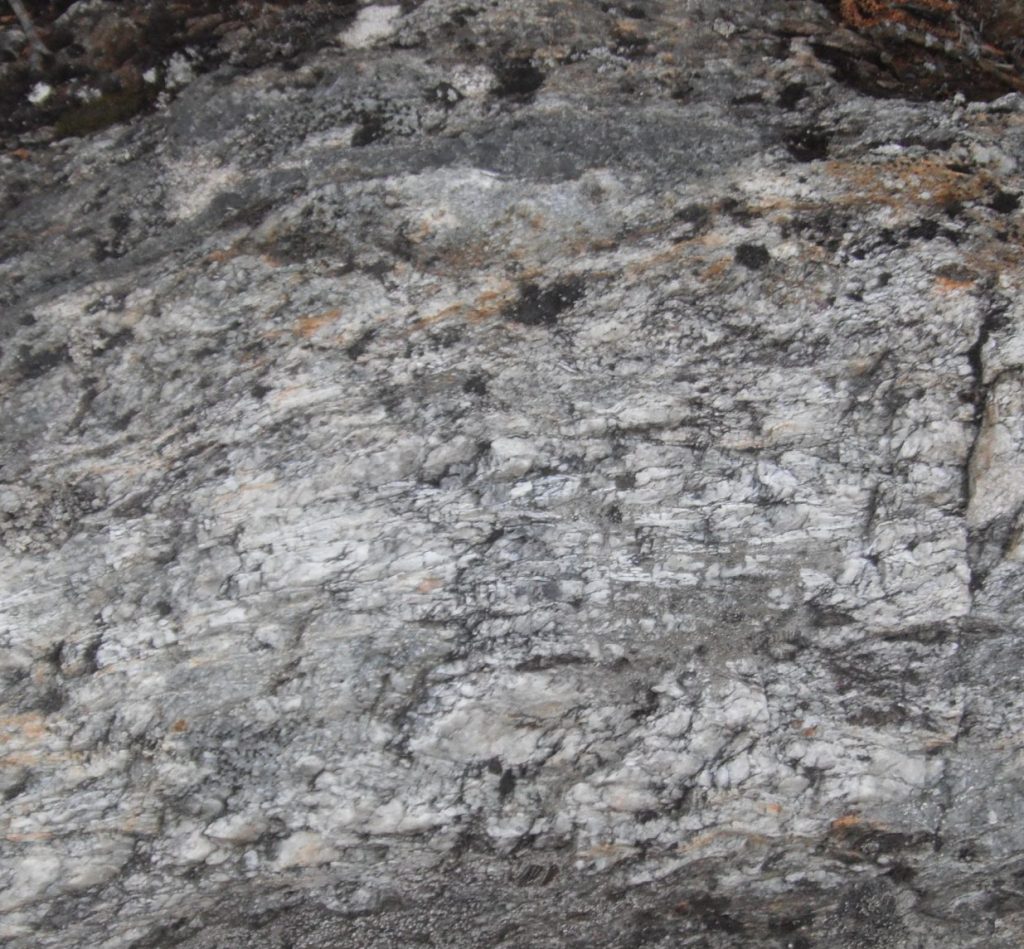
Graphite
Graphite is a form of carbon. Graphite deposits of commercial interest occur widely in regionally or thermally metamorphosed sedimentary rocks, and in hydrothermal and metasomatic deposits. Graphite is the most commonly used anode material in commercial lithium-ion batteries. Demand for graphite is surging due to increased demand from the battery sector.
View Commodity -
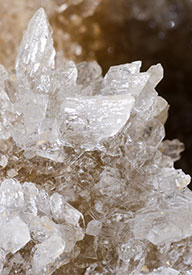
Gypsum
Gypsum is a calcium sulphate mineral, and is one of the most widely used minerals in the world. It is mainly used as a fertilizer and as the main constituent in many forms of plaster products, blackboard or sidewalk chalk, wallboard, in agriculture, and cement production. Gypsum is deposited from sea water and from lakes, as well as in hot springs, from volcanic vapors, and sulfate solutions in veins. Gypsum can form extensive evaporite beds in sedimentary basins. Demand for gypsum is principally influenced by agriculture and construction industry activities.
View Commodity -

-

K
Potassium is an alkali metal, silvery white in color, indispensable for plant and animal life. Potassium and its compounds are mainly used in fertilizers, as well as in pharmaceuticals and in the manufacture of glass, detergent, and liquid soap. Potassium can be found in several minerals; however, economic potassium is mostly extracted from minerals such as sylvite, sylvinite and carnallite in evaporite deposits formed in sea water and lakes, and from potassium-rich underground or surface brines. The global potassium market is expected to increase due to the important role of potassium in the ever-growing agricultural and industrial sectors. No substitutes exist for potassium as an essential plant nutrient and as an essential nutritional requirement for animals and humans.
View Commodity -

KCl
Potassium chloride is a metal halide salt composed of potassium and chlorine. Potassium chloride is mainly used as a fertilizer, as well as in medicine and pharmaceuticals, in water softeners, as a food additive, and in other industrial applications. Potassium chloride is mostly extracted from minerals such as sylvite, sylvinite, carnallite and from potash in evaporitic deposits formed in sea water and lakes. It can also be extracted from brines and can be manufactured by crystallization from solution, flotation, or electrostatic separation from suitable minerals. Potassium chloride is also a by-product of the production of nitric acid from potassium nitrate and hydrochloric acid. The global potassium chloride market is expected to increase to 3-4% by 2030 mostly due to the increasing food demand driven by population growth.
View Commodity -

Li
Lithium is silvery-white alkali metal that commonly occurs with other alkali metals (sodium, potassium, rubidium, and cesium). It does not occur as a free element in nature and is found in small amounts in igneous and in salt deposits and hypersaline reservoirs from mineral springs (salars) and deep, subsurface aquifers. As the lightest metal on the periodic table, and reactive in that it’s the one most eager to shed its electrons, lithium is the ideal element to make powerful, portable batteries. Other applications include uses to thicken lubricant grease, increase mechanical strength, thermal shock resistance in ceramics and glass, polymer and fine-chemicals production, and medicine.
View Commodity -

Limestone
Limestone is a sedimentary rock primarily composed of calcium carbonate (calcite, CaCO3). Limestone is typically formed in warm shallow waters through chemical precipitation or accumulation of calcareous organic debris, followed by cementation. Uses for limestone are widespread, most notably is lime production. Lime is extremely versatile, it has environmental, metallurgical, manufacturing, construction, and processing applications. Increasing demand for lime and limestone is driven most notably by the construction sector.
View Commodity -

Magnetite
Magnetite, also called lodestone, is a black to brownish black iron oxide with the chemical formula Fe3O4 and is the most magnetic of all the naturally occurring minerals on Earth. Magnetite is one of the main iron ores and main use is in steel manufacturing. It is also used as a pigment for ceramics and paints, as catalyst in the Haber Process for the manufacture of ammonia, as magnetic micro- and nanoparticles for a variety of industries, and in the separation process of coal from waste in the coal mining industry. Magnetite is very common in igneous and metamorphic rocks. It also occurs in sedimentary rocks, including banded iron formations, as well as in marine and lake sediments as detrital grains and magnetofossils. Magnetite can be found in large quantities in beach sand and dunes. The global magnetite market is expected to see a constant increase mainly due to an increase in steel production driven by infrastructure development and rapid industrialization.
View Commodity -

Mg
Magnesium is a shiny gray alkaline-earth metal. It is the lightest and the third-most-commonly used structural metal. Magnesium compounds are widely used in construction and medicine. Its main applications are aluminum alloys (used for beverage cans, packaging, transportation, etc.), die-casting (alloyed with zinc), desulfurization of iron and steel, and the production of titanium in the Kroll process. Magnesium is also used in the aircraft and automotive industries as construction metal, as well as in electronics because of its low density and good mechanical and electrical properties. Magnesium is mostly produced from seawater, well and lake brines and bitterns (salt solutions). Magnesium production is being attempted from dolomite, coal fly ash, and serpentine. There is a strong global demand in magnesium due to its increased consumption in different industries and current exploration rates may not be able to keep up with that demand. Magnesium is on Canada’s 2021 critical minerals list, meaning that it is essential to Canada’s economic security.
View Commodity -
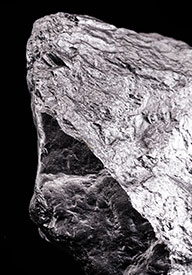
Mn
Manganese is a silvery white, hard, and brittle transition metal. Manganese has a wide variety of industrial alloy uses, particularly associated with the production of stainless steel which accounts for most of the demand. Other leading uses of manganese include construction, machinery, and transportation, as well as aluminum alloys. Manganese improves strength, workability, and resistance to wear. Manganese compounds are used in dry cell batteries, as oxidizing agents, rubber additive, plant fertilizers, in ceramics, glass making, colorant, animal feed and fungicide. Pyrolusite (MnO2) is the most important manganese ore. Pyrolusite occurs under oxidizing conditions in hydrothermal deposits, as well as in bogs often as a result of alteration of manganite, a manganese oxide-hydroxide. Large land-based resources exist but are irregularly distributed. The ocean floor has important manganese resources (manganese nodules), but no economically viable extraction method has been found to date. There is a strong global demand in manganese mostly due to the rising global production of steel. Manganese is on Canada’s 2021 critical minerals list, meaning that it is essential to Canada’s economic security.
View Commodity -
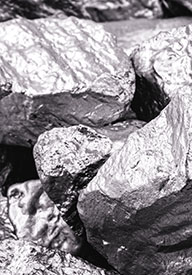
Mo
Molybdenum is a refractory metal that is used principally as an alloying agent in steel, cast iron, and superalloys. Molybdenum is commonly mined as a by-product of Cu porphyry and other types of Cu-bearing ores. The increase in steel production and growing demands from the energy sector have significantly increased the demand and price for Molybdenum over the past decade.
View Commodity -

NaCl
Sodium chloride, commonly known as salt, is an ionic compound with the chemical formula NaCl. The mineral form of sodium chloride is called halite or rock salt. Sodium chloride is responsible for most of the salinity of seawater and for the extracellular fluid of many multicellular organisms. Salt is largely used for roadway deicing, chemical feedstock, for food processing and as condiment, for agriculture, water treatment, and many other industrial applications. Most of the world's salt is dissolved in the ocean, which has nearly unlimited salt resources. A smaller amount of salt is found as halite in the Earth's crust, and a tiny amount exists in the atmosphere as suspended sea salt particles. Salt is mass-produced by evaporation of seawater or brines from salt lakes and brine wells and through the mining of halite. Most countries have salt deposits or solar evaporation operations of various sizes to meet their demand.
View Commodity -
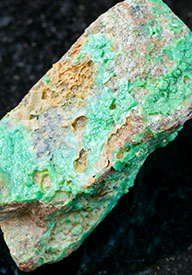
Ni
Nickel is an important metal used for the manufacturing of stainless steel and other alloys due to its very high resistance to corrosion. An increasingly important use for nickel is in batteries, both alkaline fuel cells and nickel metal hydride batteries. Nickel is generally mined from two sources laterite deposits and magmatic nickel deposits. The demand for nickel has remained high and is expected to increase as easily mined laterites are exhausted and more difficult to find magmatic nickel deposits become the primary source.
View Commodity -
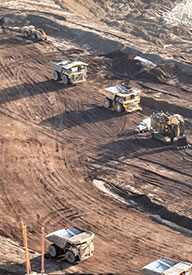
Oil Sands
Oil sands are a deposit of sand and rock that contain bitumen. Bitumen is a dense and very viscous form of oil which needs to be processed before it can be refined. Oil sands are found primarily in the Athabasca, Cold Lake, and Peace River regions of northern Alberta and Saskatchewan, Canada, and in areas of Venezuela, Kazakhstan, and Russia. APEX’s experience is focused providing wellsite geological supervision for drilling, recovery and analysis of core samples from the oil sands of northern Alberta. Coring operations are generally completed in the winter months which enable the deployment of drill rigs and additional support equipment to remote areas of the oil sands. Supervision of drilling and procedures places emphasis on efficiency of recovery in order to obtain a high percentage of core retrieved. Core samples extracted are immediately evaluated to determine the depth and quality of oil sands prior to being sent for laboratory analysis.
View Commodity -
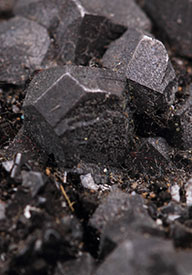
Pb
Lead is a soft, malleable heavy metal that is denser than most common materials, possesses a low melting point and is resistant to corrosion. Lead has historically been used in a wide array of applications. Currently the primary use for lead is in batteries, however it is also used as ammunition, weights/counterbalances and in construction applications. Economic lead deposits include, sedimentary exhalative (SEDEX), Mississippi Valley Type (MVT) Volcanogenic Massive Sulphide (VMS) systems. The current rate of exploration and development of major new lead projects will not keep up with the projected increasing demand for the commodity.
View Commodity -
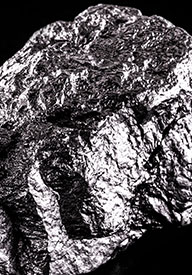
PGE
The platinum group elements (PGE) comprises six transition metals: platinum (Pt), palladium (Pd), ruthenium (Ru), rhodium (Rh), osmium (Os), and iridium (Ir). PGE have similar physical and chemical properties and tend to occur together. PGE have many applications with the majority of these being industrial/ Their main use is in catalytic converters. PGE are also largely used in electronics to increase storage capacities of devices and for other functionalities. In the chemical industry PGE (platinum and rhodium) are used to manufacture specialty silicones and to make nitric oxide, the raw material for fertilizers, explosives, and nitric acid. In the petrochemical industry, platinum-supported catalysts are used to refine crude oil and to produce high-octane gasoline. Other applications include their use in glass manufacturing, coating for industrial crucibles, jewelry (platinum), medical implant, cancer-fighting drugs, and stock exchange. Most of the world’s PGE are concentrated in magmatic ore deposits, particularly in mafic and ultramafic igneous rocks, usually associated with copper and nickel mineralization. PGE placer deposits can be formed from the erosion of primary PGE-enriched rocks, followed by transport and accumulation of the PGE-enriched sediments. There is a gap between the world PGE production and demand and efforts are made to attempt to close that gap through recycling. To date, almost all known PGE production and resources are associated with only three geological features, which highlights the need for more PGE exploration. PGE are on Canada’s 2021 critical minerals list, meaning that they are essential to Canada’s economic security.
View Commodity -
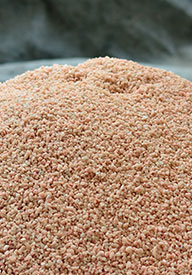
Phosphate
Phosphates are the naturally occurring form of the element phosphorus (P). In mineralogy and geology, phosphate refers to a rock or ore containing phosphate ions (PO4)3-. There is a large and diverse group of phosphate minerals but only a few species are common: apatite group, xenotime, monazite, triphylite, etc. Phosphates are mainly used as fertilizers for the agricultural sector. They are also used in food preservatives, animal feed supplements, cosmetics, fungicides, anti-corrosion agents, metallurgy, ceramics, and water treatment. Phosphates are mostly mined from phosphate rocks, which occur principally as sedimentary marine phosphorites. Significant igneous phosphate occurrences also occur. In addition, phosphate resources have been identified on the continental shelves and on seamounts in Pacific Ocean and the Atlantic Ocean. There are no substitutes for phosphorus in agriculture. Although no imminent shortages of phosphate rock are forecast, the instability of the supply chain has lead to significant recent price increases.
View Commodity -
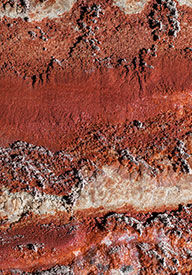
Potash
Potash refers to a variety of mined and manufactured salts that contain potassium in water-soluble form. Potash is mostly used as a soil fertilizer in agriculture, which include potassium carbonate (K2CO3), potassium chloride (KCl), potassium sulfate or sulfate of potash (SOP), and potassium magnesium sulfate (SOPM) or langbeinite. Potash is also used in metal electroplating, drilling fluids, steel-heat treating, medicine, water treatment, soap manufacturing, cement, food products, textiles, ceramic, and other industrial applications. When combined with silica sand, potash is used to produce water glass for use in paints and arc welding electrodes. Potash is mostly extracted from evaporitic deposits formed in sea water and lakes. It can also be extracted from brines and can be manufactured by crystallization from solution, flotation, or electrostatic separation from suitable minerals. Potash ores are typically rich in potassium chloride (KCl), sodium chloride (NaCl) and other salts and clays. The global potash demand is driven by strong growth in end-consumer industries. Potash is on Canada’s 2021 critical minerals list, meaning that it is essential to Canada’s economic security.
View Commodity -
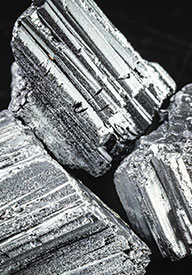
REE
Rare earth elements (REE) comprise the 15 elements of the lanthanide series: La, Ce, Pr, Nd, Pm, Sm, Eu, Gd, Tb, Dy, Ho, Er, Tm, Yb and Lu. Scandium (Sc) and yttrium (Y) are often considered as part of the REE group because they have similar properties and are often found in the same deposits. REEs are usually soft, ductile, malleable, and reactive, especially at elevated temperatures or when finely divided. These unique properties make REEs useful in a in a wide variety of applications. REEs are used in electronics and electrical components, glass, magnetic materials, lasers, and numerous other industrial processes.
View Commodity -
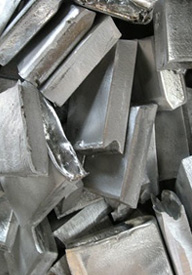
Sc
Scandium is a silvery-white metallic element. Although abundant in the Earth’s crust in low concentrations, large concentrations of scandium in magmatic, hydrothermal or supergene deposits are scarce, and scandium is typically produced as a by-product to other metals. Scandium is a critical mineral that is used in the production of alloys for the aerospace industry, in solid oxide fuel cells, specialized lighting applications, ceramics, lasers, electronics and in alloys with aluminum to produce sporting goods.
View Commodity -

Silica Sand (Proppant)
Silica sand is a loose fine-grained granular material consisting chemically of silicon dioxide. Silica sand has a wide range of everyday uses with various applications including glassmaking, paints, coatings, ceramics, refractories, construction material, industrial abrasives, water filtration, sport fields, and others. Silica sand is known as proppant (frac sand) when mixed with fluid and used during the hydraulic fracturing process of rocks. Proppants are solid materials designed to keep an induced hydraulic fracture open, during or following a fracturing treatment. Other categories of proppant include resin-coated sand and ceramic beads.
View Commodity -
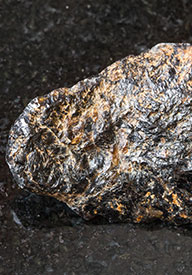
Sn
Tin is a soft silvery-colored post-transition metal. Tin is mostly used as an alloy with other metals, or as a protective coating for steel containers and for pipes. It is also used in electrical circuits, electronics, glass manufacture and a variety of chemical applications. Tin is scarce in the Earth’s crust. Cassiterite (SnO2) is the principal mineral from which tin is commercially extracted. Cassiterite is typically found in veins closely associated with granite, in granite pegmatites and in greisen. However, most of the world’s tin is produced from placer deposits. Tin is on Canada’s 2021 critical minerals list, meaning that it is essential to Canada’s economic security.
View Commodity -

Ta
Tantalum is a ductile, refractory metal that is highly resistant to corrosion. Tantalum is commonly produced as a by-product of tin smelting. Tantalum is a critical mineral that used as a component for electronic capacitors, including cell phones, personal computers, and automotive electronics, and is alloyed with other metals for jet engine components. Recent demand for tantalum has been driven by the rapid growth of the electronics industry and the capacitor market.
View Commodity -

-
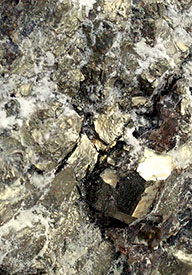
U
Uranium is a silver-colored heavy metal that is malleable, ductile, softer than steel and nearly twice as dense as lead. In nature, uranium is generally found as an oxide, U3O8 and UO2, of which U3O8 is the most stable and occurs in as the olive-green-colored mineral pitchblende. Uranium atoms exist as several isotopes, of which the more common are uranium-238, uranium-235, and uranium-234. All three isotopes are radioactive and emit alpha and beta particles and waves of pure energy such as gamma and X-rays. The uranium-235 isotope is capable of fission which occurs when the nucleus is split into two parts when one neutron is absorbed. During splitting, enormous amounts of energy are released making this isotope of uranium valuable for use in nuclear reactors to generate electricity, defense applications and in small reactors to produce isotopes for medical and industrial purposes. The three most important geological settings for uranium resources are sedimentary hosted (Kazakhstan), unconformity-related (Australia and Canada) and iron oxide breccia complexes (Australia).
View Commodity -

-
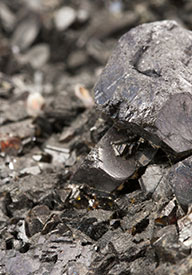
Zn
Zinc is a slightly dense, inexpensive, easily worked, reactive metal that has the ability to attract oxygen allowing it to act as a sacrificial anode. Zinc is most commonly used as an anti-corrosion agent (galvanization) to protect iron and steel from rust. Zinc is a major component in metal alloys including brass, bronze and others and can also be used as a lead replacement. Zinc alloys have a wide variety of uses including consumer goods, automotive, manufacturing, electronics/communication. Zinc compounds have a wide range of applications including as semiconductors, fire retardants and pharmaceuticals. Economic zinc deposits include, sedimentary exhalative (SEDEX), Mississippi Valley Type (MVT) Volcanogenic Massive Sulphide (VMS) systems. The rate of exploration and development of new zinc projects may not be able to keep up with demand which is expected to triple by 2030 driven by net-zero carbon emission targets.
View Commodity